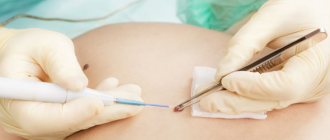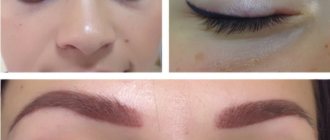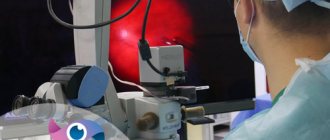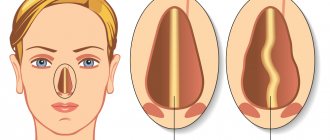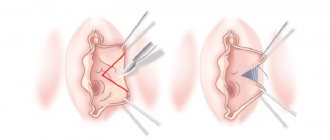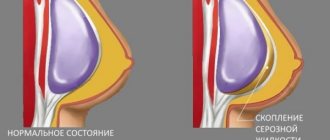Suturing is a procedure that almost no operation can do without. It is also carried out in case of injury.
The doctor applies and removes sutures, but they are necessary for tissue fusion. On what day the sutures are removed after surgery and how exactly depends on a combination of factors.
For example, on the part of the body on which they are applied, on tissue damage and the characteristics of the recovery of the human body. This is also influenced, among other things, by the patient’s age.
Regardless of the nature of the wound, suture material is removed from it only when its edges have reliably fused. But it is important not to delay the removal of suture threads, as this can result in serious problems if these threads are not removed in a timely manner. When worn longer than necessary, they grow into the skin, which subsequently leaves noticeable scars on it. In addition, there is a danger of suppuration of the suture.
Types and features of seams
Depending on the wound, the patient may receive one of two types of sutures - each with its own advantages and disadvantages:
- Submersible . If they were applied to you, then you do not need to worry about removing them. They consist of natural materials that gradually dissolve in the patient’s tissues naturally, without causing rejection by the body. Their disadvantage is their low strength, therefore, when wearing such seams, you need to be careful, avoiding sudden movements and excessive loads. These sutures can consist, for example, of small sheep intestines (catgut). Their resorption is a completely natural process without consequences for humans, caused by hydrolysis and tissue enzymes;
- Removable . They do not dissolve on their own, but must be removed after the wound has healed. Such seams have the advantage of strength, which significantly exceeds the strength of submersible ones. Accordingly, with removable threads, the patient can lead a more active lifestyle. They are made from both natural materials like silk and synthetic ones - nylon, nylon and others. There are also metal seams in the form of staples and wires.
Regardless of the type, the sutures must meet certain requirements: not interfere with blood circulation in the tissues of the wound, not lose strength until it heals, and not leave cavities in it.
Who should perform suture removal?
In public clinics, both doctors and experienced nurses can carry out such manipulations. However, if you want, in addition to suture removal, to receive regular monitoring by a qualified specialist in the most comfortable conditions, use the service of calling a surgeon to your home
. This will give you the opportunity to independently choose the time of your meeting with a specialist, eliminate the need to stand in queues for a long time and allow you to avoid exposing your health to physical stress once again.
Our directory for private clinics in Moscow “Your Doctor” will help you find an experienced surgeon in an area close to your place of residence and make an appointment with him.
This article is posted for educational purposes only and does not constitute scientific material or professional medical advice.
On what day after surgery are sutures removed?
There are many factors that determine when exactly after surgery the sutures are removed. The only thing that can be said unequivocally about this is after the edges of the wound have fused, and this depends on how serious it is, where it is located and what the characteristics of the patient’s body are. The longest recovery time is required for older people and those whose bodies are weakened by illness.
Factors influencing the timing of suture removal:
- general condition of the body;
- the occurrence of complications after surgery;
- ability of tissues to regenerate;
- nature of the operation;
- area of operation;
- depth of cut;
- suture material;
- the presence of conditions that complicate the recovery of the body (illnesses not related to the operation, but affecting the general condition of the patient);
- the occurrence of infection (if the incision becomes infected, the threads will be removed so that the wound is open).
It is impossible to give a definite answer to the question of how many days after surgery the sutures are removed. In each individual case, the timing is individual. In order to clarify them, you need to talk to your doctor and soberly assess the condition of your body. We can only talk about approximate withdrawal periods taken from statistics and medical literature:
- for surgery on the face or neck - removed after 4-5 days;
- on the head - after 6 days;
- in the chest areas - after 10-14 days;
- from the operated foot or lower leg - after 10-12 days;
- for local operations of the abdominal region - after 6-8 days;
- after amputations, they are removed after 12 days.
On average, if we take statistics into account, stitches are most often removed after 6-9 days . This process itself is carried out by pulling the thread knot upward until the thread hidden in the tissue appears above the skin and is cut. For long wounds, the first half of the sutures is removed first, and after a few days the second half is removed.
Postoperative sutures - what are they?
During any surgical operation, tissue damage occurs. During treatment, it is not always possible to do without a stitch, so the edges of the wound are pulled together and connected using staples or threads.
Recently, special surgical threads are increasingly being used that do not require subsequent removal - catgut. As the wound heals, such threads simply dissolve.
If regular threads are used after the operation, then after a certain period of time the suture must be removed. They are usually made with silk or nylon threads.
There are several types of surgical wound closure:
- primary - established immediately after injury or surgery;
- secondary - applied to a granulating wound;
- provisional - applied 4-5 days after surgery.
If a suture is placed from a non-absorbable material on a deep wound, then in the absence of an inflammatory process it remains in the tissues forever.
Postoperative sutures also differ in their type - interrupted, purse-string, wrapping. The type of suture is selected based on the wound or type of operation.
How to calculate removal time based on suture material
The duration may vary depending on the suture threads used. The doctor selects for them the material that meets the requirements for healing each specific wound. It is based on the material he chose for sewing it up that one can draw conclusions about the approximate timing. You need to focus on how long the threads can hold the wound. In addition, suture threads have other characteristics, depending on their type:
- Regular catgut . Immersion material. Holds the wound for 7-10 days. After about two weeks, it loses about half of its original strength. Absorbs in tissues after 30-50 days;
- Chrome plated catgut . This material is capable of maintaining a wound for 21-28 days, and dissolves in about three months;
- Dexon . It is an absorbable synthetic thread. Retains wound edges for about four weeks. It begins to dissolve in a month, and ends in three;
- Silk . Does not dissolve. It loses tensile strength within a year, so it is not necessary to calculate how long it will take to wear seams made of this material - in any case, they will be removed much earlier than the silk has time to wear out;
- Surgical flax . It loses half of its strength within six months from the moment of suturing. After two years, it retains a little more than a third of its initial strength.
Calculating the approximate time for removing sutures based on the materials from which they are made is a difficult matter. It is much easier to achieve this by talking to your doctor. However, it is useful to know some parameters of the suture material. For example, if you have a wound on your foot or leg, which is stitched up with threads made from ordinary catgut, you may need to question the qualifications of the doctor who operated on you. The fact is that these places on the legs are relatively problematic and require long-term care, and catgut is not strong and durable.
One of the most popular myths about scars after plastic surgery is that until the scar matures, you cannot touch it until 6 months, and only after 6 months you can start doing something with it.
There are others: that the seams need to be wiped with vodka, that in the first months after plastic surgery the patient should strain less, otherwise the scar will become rough, that almost any scar will turn white over time and become hardly noticeable...
Larisa Iosifovna Radetskaya, dermatologist-cosmetologist, candidate of medical sciences, laser therapist and head of the training center on laser technologies, specialist in the correction and treatment of scars, tells.
When should I start dealing with post-surgical scars?
You can start working with the scar 2-4 weeks after surgery, when the stitches are removed and the scabs have come off.
Signs of pathological scar growth may appear as early as 3-4 weeks. What you should pay attention to? The appearance of additional sensations in the scar (itching, pain), increased brightness, hyperemia, and a stagnant bluish color indicate that the scar is beginning to actively grow, although normally it should gradually fade. And then it is necessary to include therapeutic procedures that help curb the growth of the scar. The sooner you start this fight, the easier, faster and cheaper the treatment will be. And the better the end result will be.
This does not mean that 2 weeks have passed - and rather it is necessary to intervene in the scarring process. But if the patient was told to wait for the final result within six months, then he will come to the cosmetologist in six months. And the scar, in the presence of the above symptoms, can grow significantly during this time.
Some operations cannot be done without strong tissue tension: in the T-shaped joint after anchor mastopexy, in the sutures after abdominoplasty, or in the “tick” that goes into the intergluteal fold during body lifting. It is this tension that can cause increased growth of scar tissue: the connective tissue grows, trying to quickly close the wound defect and restore the integrity of the body. This is the law of pathophysiology: before the functional tissue has time to grow, the connective tissue will grow.
Such areas can acquire not only a red, but also a stagnant-bluish tint, since the vessels grow very actively, and the outflow of blood is difficult. Prolonged congestive hyperemia in a large percentage of cases will lead to the appearance of hyperpigmentation.
What if a certain area of the seam does not heal for a long time?
Long-lasting inflammation means that the primary adhesion of the wound edges has not occurred. The scar in this area will no longer be perfectly thin. And if you do not help the tissues in such a situation, the scar will either spread and become wide, or rise above the level of the skin.
It is necessary to treat the wound, stimulate tissue regeneration in the problem area, and then begin to work with the scar itself.
Hygiene of sutures (scars)
Surgeons often recommend wiping stitches with vodka - after a shower or instead. Sometimes dry the strips with a hairdryer.
The seams can be wiped with chlorhexidine or miramistin, but not with vodka. Vodka burns and dries out the delicate young epithelium; its use is completely unjustified. After the surgeon has given permission to shower, wash the sutures with a regular body wash, preferably a pH-neutral one. Scars need to be washed every day. In the scalp - daily or every other day.
These words are confirmed by a very experienced dressing nurse, who has been working with eminent plastic surgeons for 40 years, caring for the scars of patients after plastic surgery:
“For disinfection, chlorhexidine is sufficient, which does not have such an aggressive effect as vodka. In medicine, vodka is not used as a means of treatment, disinfection or care for postoperative sutures.”
Is it possible to determine in advance how healing and scarring will proceed?
It's very difficult. It is necessary to carefully monitor the scar in order to begin treatment measures on time. Ideally, the body should have an absolutely balanced ratio of collagen (the protein that makes up scar tissue) and the enzyme collagenase (which absorbs excess collagen formed during scarring). Then the scar is formed normotrophic, elastic, soft, does not pull or sag. But, alas, this does not always happen.
In reality, this ratio may be different for people, and it determines what kind of scar it will be: normotrophic, hypotrophic or hypertrophic.
There are people whose collagenase is very active, or whose collagen production is reduced, and they may develop hypotrophic (retracted) scars. In such patients, fillers based on hyaluronic acid can be absorbed quickly, in a couple of months, although they should “stand” for 6-8 months. If an insufficient amount of collagenase is produced, collagen dominates and grows, and a hypertrophic scar is formed.
Healing and scarring depends on many reasons: on the activity of enzymes in the human body, on congenital or acquired lack of vitamins, microelements, hormonal profile, immunity, stress.
If a person has already had some kind of intervention, you can guess how the healing will proceed by carefully examining the existing scars. But, firstly, a lot depends on the tension of the tissues during this operation, and secondly, in different areas of the face and body, the skin can heal differently.
The influence of physical activity on scar formation
There is an opinion that for several months after plastic surgery it is advisable to minimize any physical activity (including sex) in order to avoid a rush of blood to the sutures. The rush of blood, the myth goes, can lead to scar growth. Is it so?
Postoperative swelling causes tension in the tissues and stretches the edges of the scar. Tissues filled with additional intercellular fluid compress vessels and create hypoxia (oxygen starvation) and ischemia (decreased blood circulation) of tissues, microcirculation worsens. The next stage will be the growth of scar tissue, and then the body will “sprout” additional vessels in it to compensate for the lack of oxygen and prevent necrosis. Therefore, the faster the tissue can be relieved of swelling, tension and tension that it creates, the more delicately the scar will form.
Adequate physical activity (after the end of the early postoperative period) improves tissue trophism and accelerates the movement of all fluids - lymph, venous outflow, arterial inflow, and therefore accelerates recovery and healing. Of course, we are not talking about doing acrobatic stunts, riding a horse or doing strength exercises on the operated area a week after installing the implants. Typically, it is necessary to limit activity for up to a month, and then you can include light/moderate workload in your life. But lying in bed and waiting for the swelling to go away on its own is not advisable. Vascular bundles lie in the muscle layers, and muscle movement helps move fluids in the right direction, to the collectors that remove fluids.
Of course, first of all you need to listen to the recommendations of the operating surgeon. I speak as a specialist who is consulted only with bad scars. The patient may not even think about the fact that scarring can be pathological, and considers his symptoms to be a variant of the norm. This material is a warning and a call to carefully monitor scars in order to prevent a situation where the consequences of “beautification” boldly cross out the effect of “beautification.” And to fix it, it will take a lot of painstaking work over several months.
Working with scar
Patients do not know modern correction options and agree to live with wide, hyperpigmented or bluish scars, enjoying the good shape of the chest or abdomen after surgery. But it is POSSIBLE to improve the condition of almost any scar! We can make the scar flat, improve its color and smooth out the boundary between the scarred surface and healthy surrounding skin.
If healing proceeds without any problems, the scar does not require help or additional intervention. But if itching, pain, or discomfort appears in the scar, this is a reason to consult a cosmetologist with experience in working with such pathology. A thorough examination and palpation, clarification of the characteristics of healing and the characteristics of the patient’s body allow us to build the correct algorithm for working with pathological tissue.
Treatment is selected individually, depending on the specific clinical situation. Some people need to coagulate venous and/or arterial vessels, others need to soften deep scar formations, sometimes directly influence proliferation (cell division and multiplication) in the scar. It is often necessary to relieve tension in surrounding tissues with botulinum toxin, and in atrophic processes, on the contrary, to replenish the required volume of missing tissues. The set of measures almost always includes one or another laser procedure. The more technological capabilities a doctor has in his hands, the more sophisticated the correction will be.
*Patients often call hypertrophic (bulging) or wide, “blurry” scars keloids. It's a delusion. A keloid is uncontrollably growing scar tissue, and one of the main diagnostic criteria is its growth beyond the boundaries of the damage. The fight against keloids is a separate topic.
Sometimes patients with pathological scars are prescribed only physiotherapeutic procedures: for example, a course of medicinal electrophoresis.
Physiotherapeutic methods perfectly help tissues during different periods of healing: first of all, when there is an urgent need to reduce acute tense swelling of tissues. Magnetic therapy, microcurrent therapy and other classical methods are suitable for this. Remarkable results can be obtained using a low-intensity laser. In addition to drainage, each method has other specific effects: improving arterial microcirculation, increasing oxygenation, increasing mitochondrial cell activity and tissue energy potential.
But as a physiotherapist who defended his dissertation in physiotherapy, I know very well how much the technologies of classical physiotherapy differ in terms of effectiveness and dynamics from the modern possibilities of aesthetic medicine. In no way do I belittle the effectiveness of physiotherapeutic technologies!
Treatment of a patient after anchor reduction mammoplasty. Hypertrophied pulling scars, hyperpigmentation. In the photo: before (application 7 months after surgery) and the result 2 months after 1 BBL+Halo procedure without preliminary preparation and post-laser therapeutic procedures (the patient lives in another city and no longer comes for procedures).
This is not a public offer! There are contraindications. Before use, consultation with a specialist is required.
It is necessary to relieve the tension of scar tissue and coagulate the vessels feeding the scar. At the same time, the phrase “removing blood vessels” sounds short, but in reality more than one procedure will be required. The vessels tend to sprout again and again, and their growth will have to be restrained.
A set of measures is required: both to relieve tension and to coagulate the vessels. By coagulating blood vessels, we deprive scar tissue of nutrition. Large veins can grow from small vessels, which are sometimes impossible to coagulate without getting burned: scar tissue is much denser than healthy skin, and heat dissipation in it is worse. And this is one of the reasons to start working with the scar at an early stage: while the pathological vessels have not yet become large, and it is much easier to remove them.
But the vessels begin to grow pathologically due to tension, so it is impossible to single out each topic separately - here is a red scar, it needs to be coagulated, but here is a convex one, inject it. The algorithm is different in each case. For example: first botulinum toxin, enzymes, hormones (or another option). Then laser correction of blood vessels. Then, possibly, laser scar correction.
By the way, the phrase “laser resurfacing” is unprofessional, since it can mean anything. Which type of laser treatment will be needed depends on the condition of the scar and the area in which it is located.
This is not a public offer! There are contraindications. Before use, consultation with a specialist is required.
Myth: “The longer you wear the strips, up to 6 months, the better the scar is protected from stretching.”
Strips are completely useless in the later stages. For different zones, the period of their use is different, and the surgeon, upon examination at the right time, will remove and cancel the strips, since the final adhesion and fusion of the edges of the wound has occurred. The tissues are stitched, and a thin strip of patch on the upper layer of the epithelium does not affect the formation of the scar. If internal tension persists, which stretches the skin, strips cannot help.
Working with scars after blepharoplasty: before and after 2 procedures using a classic fractional erbium laser.
This is not a public offer! There are contraindications. Before use, consultation with a specialist is required.
Working with scars after removal of biopolymer gel: before and after 2 procedures with a fractional erbium laser:
This is not a public offer! There are contraindications. Before use, consultation with a specialist is required.
How much does it cost?
If the patient has limited funds, it is better to come for a consultation and discuss options taking into account financial capabilities. Medicine is not mathematics. It is impossible to say: “I will do everything in one procedure.” Sometimes it is better to excise a complex scar and then begin to work with a new scar, carrying out supportive and preventive measures at the right time.
The cost of treatment depends on the complexity of the work, the number of stages, the quality and area of scarred surfaces, the need to use various medications and botulinum toxin, as well as the level of professionalism of the doctor.
For example, with an anchored breast lift, the total length of the stitches can be 50 cm, or maybe 100 cm. Botulinum toxin needs to be injected both into the scar itself and around the scar - sometimes a whole bottle is needed, which is 500 units. Sometimes more.
Vascular coagulation with BBL broadband pulsed light is done with a small adapter, and the cost of the procedure is determined by the number of flashes.
If it is necessary to include platelet-derived growth factors PRP in therapy, the cost of the procedure depends on the number of tubes used, when the price of one tube for PRP is now 12,000 rubles.
Thus, one procedure for working with scars can cost either 6,000 rubles or 60,000 rubles.
Often patients come immediately for “laser resurfacing” of the scar. But before starting laser treatment, preparation is usually required: bring the scar to a calm state, make sure that it no longer grows, and minimize all risks.
Laser treatment is carried out at intervals of 1-2 months, sometimes less frequently. How many procedures will be needed, and most importantly, which treatment options will be optimal in a particular case, it is impossible to answer without an examination. It all depends on the condition of the scar, timing of treatment, localization. Two or three procedures - in the most ideal situation, when everything is quite good and you want to make the scar almost invisible. If the picture is not so perfect, you may need 4, 5 procedures, or more. Both laser and non-laser technologies are used.
I sometimes prescribe gels and patches for scar treatment between procedures. They create compression, moisturize the scar and thereby help to restrain its growth.
Silicone gels and patches for scar treatment
If a gel or patch is intended for the treatment of hypertrophy or keloid, then it should be used only as indicated: on an already hypertrophying or keloid scar. The task of these drugs is to resolve pathologically growing tissue. If such preparations (and these are medicinal covering materials containing active substances) are applied to normal scars that are still forming without excess collagen, they can actually have a negative effect, and the scar will “spread.”
But if the product is indicated for the treatment of any forming scars, then its composition is different. Special plasters are great for protecting and moisturizing fresh scars and are useful in the postoperative period.
Working with scars after a facelift. From the moment of the first treatment (first photo) to the first laser correction (last photo) I had to work for 8 months. The earlier the pathological development of a scar is detected, the faster its laser correction is possible:
First visit 8 months after surgery: hypertrophy (convex scar), there is a keloid-like area, congestive hyperemia due to long-term vascular growth, tissue tension, discomfort in the scar.
The process of scar treatment with therapeutic methods: coagulation of blood vessels with broadband pulsed light, reduction of tissue tension with botulinum toxin, inhibition of growth and reduction of the density and amount of pathological collagen with hormonal and enzyme preparations for 8 months.
First laser correction: fractional Er:YAG without coagulation, in some areas with coagulation to reduce wrinkles and skin contraction.
2.5 months after the 1st laser correction
This is not a public offer! There are contraindications. Before use, consultation with a specialist is required.
Scars after leg lengthening using the Ilizarov apparatus.
1st procedure: Er:Yag fractional laser, 2nd (after 3 months): – Halo. Photos before and 1.5 months after the second procedure:
This is not a public offer! There are contraindications. Before use, consultation with a specialist is required.
Scars on the scalp
Can hair grow at the site of a scar on the scalp after a facelift? In place of the scar itself, there is, of course, no scar tissue: there are no hair follicles or other functional cells. But you can reduce the width and volume of the scar, increase the amount of healthy skin around it, using laser and cellular technologies, and thus the hairless area will decrease. Subsequently, hair can be transplanted into healthy skin next to the scar, which will significantly improve the situation aesthetically.
Covering scars with tattoos
If you plan to improve the condition of a scar, you do not need to get a tattoo on it. Laser exposure works to damage the skin, but a tattoo will not allow you to use, for example, a broadband laser that is absorbed by paint pigments. And if in the future you want to get rid of the drawing, a lot of additional difficulties will arise.
Hypotrophic scars (pits)
When working with hypotrophic scars, the specialist’s task is to smooth out the sharp transition from the bottom of the fossa to healthy skin, as well as to stimulate the growth of healthy dermal tissue in the atrophy zone. Is it possible to fill a hole with filler? Yes, this is a disguise that needs to be repeated periodically. But it is possible to achieve complete replenishment of the defect and smoothing of the skin at the site of former atrophy.
One scar was completely corrected and leveled with the surface of healthy skin after 1 laser procedure, and the neighboring one will require another procedure.
A scar on the face after removal of a congenital pigmented nevus with hair growth in childhood. 2 laser correction procedures were performed.
This is not a public offer! There are contraindications. Before use, consultation with a specialist is required.
Working with hypopigmented (white) scars
White scar is scar tissue that lacks the melanin found in healthy skin. White scars can also be very noticeable. For example, hypopigmented scars around the areola after breast surgery.
How to improve the condition of such a scar? We need to reduce the amount of scar tissue and try to replace it with healthy tissue. You can do a couple of classic fractional laser procedures, and then, to completely level the microrelief and smooth out the boundaries, use the HALO technology. With the help of cold ablation, we remove part of the scar, and during healing, a different collagen will grow - not the same one that healed the scar. In place of scar cells, we stimulate the appearance of healthy cells and tissues in which melanocytes will appear, producing our natural skin pigment. And then the difference in color between scar and healthy tissue will gradually smooth out.
Is it possible to make scars completely invisible?
It is possible, but not all. Once again, I would like to emphasize that any outwardly similar scars can behave completely differently. Let me also remind you that in this article we are not talking about keloid scars.
Sometimes, if the scar is very large, rough, deformed, and its correction requires a lot of time and effort, it is better to excise it (but before doing this, extinguish the pathological growth and make sure that risks are minimized). Here we need mutual understanding and interaction between the cosmetologist and the surgeon. Next, we even out the color of the scar, help the hyperemia fade, and then reduce its width, height, and volume.
Time is our helper, but time can also be our enemy. We work not only on the scar itself, but also on healthy tissue. Scar tissue will thin out, healthy tissue will grow. The transition between them will become less noticeable, perhaps completely invisible to a prying eye.
To communicate with patients who have undergone plastic surgery, come to our Forum
Removing stitches yourself at home
The best solution for removing threads from a wound is to go to the doctor, but there are rare situations in which this is difficult. If you are careful and have some knowledge, you can remove the threads yourself, but if they have grown into the tissue, forget about it and consult a doctor. The danger of removing stitches at home lies in the fact that you can introduce an infection into the healing wound. But if you decide, then prepare everything you need:
- tweezers;
- sharp scissors;
- gauze napkin with adhesive tape and bandages;
- iodine and hydrogen peroxide;
- a saucepan with boiling water and medical alcohol.
First, be sure to sterilize all metal instruments that may come into contact with the healing wound - this requires boiling water and alcohol. After rinsing the tweezers and scissors in boiling water and treating them with alcohol, lightly pour iodine onto the operated area. Next, you need to carefully grab the knot of thread with tweezers and smoothly pull it up. A fragment of thread should appear from the channel.
If nothing works, the thread may have grown in, and in this case you should not continue to remove it yourself. Provided that the thread still stretches, cut it with scissors so that there is no knot left. Then, using tweezers, grab the thread from the edge of the seam opposite the edge of the cut thread and gently pull. Important: the thread passing through the fabric must be clean, otherwise all independent manipulations must be abandoned immediately.
After removing the thread from the wound, treat it again, preferably with hydrogen peroxide. After this, use a plaster and a sterile bandage - tightly, but without excessively squeezing, cover the area from which the stitches were removed.
Practicing such home medicine is at your own peril and risk. By doing this, you expose yourself to the danger of infecting the wound, and therefore it is better to entrust the removal of sutures to a specialist, based on the described time frame and the prescriptions of your doctor.
How and why do seams come apart?
Sometimes situations arise when the seams come apart. In this case, you need to consult a doctor and stitch up the wound again if it has not yet healed.
They can also disperse on the surface of the skin and inside the wound. If this happens, the patient feels pain and discomfort, and bulges or pits may appear.
With discrepancy, an increase in body temperature may also be observed, and the condition gradually worsens. If the operation was performed on the abdomen, then nausea and vomiting may occur.
Feeling unwell, vomiting and nausea should alert you.
You cannot leave this situation to chance; you must immediately consult a doctor! Under no circumstances should you try to fix the seam yourself, do not touch it at all, treat it with a septic tank and go to the hospital.
Surgery to remove metal structures after osteosynthesis of fractures
Removal of metal structures is a planned operation, which is performed after the consolidation (fusion) of the fracture , the formation of a full-fledged bone callus, this occurs after approximately 8-12 months. There is quite a lot of debate about whether it is worth removing the metal structure after osteosynthesis if it does not interfere?
A few reasons:
- In any case, this is a foreign body and no one can predict how the metal will behave in a few years, even though it is a high-tech titanium alloy. This includes metallosis, and suppuration of metal structures, up to such complications as osteomyelitis.
- If the metal structure begins to interfere after 3 or more years, then the callus will “grow” over the plate or screws, or the rod, so that it will be very difficult to technically remove it. Therefore, implants should be removed routinely approximately one year after installation.
Another thing is that the removal of structures from the pelvic bones is often accompanied by heavy bleeding, extensive tissue damage, and the risk of trauma to the pelvic organs. As a result, implants should be removed only when absolute indications arise—complications, signs of implant rejection, etc. Only structures that fix the symphysis pubis can be removed as planned; during this operation, extensive trauma can be avoided.
Determining factors
How to remove postoperative sutures at home? The moment of removal of postoperative sutures directly depends on a number of factors, namely:
- the patient's well-being;
- nature of the operation;
- complications;
- characteristics of the disease;
- patient's age;
- restorative features of the body.
The fixing material is foreign to the body. Therefore, to avoid the onset of the inflammatory process, sutures should be removed in a timely manner. How to remove stitches at home? It is not recommended to do this at home due to the possibility of infection, which puts the patient’s life at risk.
Contraindications for removal
If the structure is located close to the nerve endings, then access to it during surgery will be difficult. The risk of undesirable consequences in this case outweighs the benefits of removing the implant. A reasonable decision would be to refuse removal surgery. If there is such a need (for neurological disorders), then surgical intervention involves the participation of a microsurgeon. The decision on this matter is made individually, taking into account the results of the x-ray examination.
The operation to remove the fixing structure is less traumatic than installing it.
